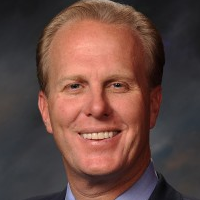San Diego Mayor Saves His First Veto for Minimum–Wage Increase
 San Diego Mayor Kevin Faulconer
San Diego Mayor Kevin Faulconer
Sixty-three percent of San Diego residents, and 71% of people nationally, favor a higher minimum wage. So do six of nine members on the San Diego City Council. But the mayor does not, so the wage in California’s second-largest city will stay the same, for now.
Republican Mayor Kevin Faulconer issued his first, although not unexpected, veto of an ordinance since winning an election to replace disgraced Democratic Mayor Bob Filner. The city council approved a schedule of increases in the municipal minimum wage on July 28 that would take it 50 cents higher than the state’s $10 level by January 2016.
It would go up another $1 an hour a year later and be indexed to the local Consumer Price Index starting in 2019. The state minimum wage rose from $8 to $9 on July 1. The ordinance also included a provision requiring that employees receive five days of sick leave annually.
Council President Todd Gloria, who introduced the ordinance, said, “When 38% of San Diego workers don't earn enough to make ends meet, something must be done.” The council has 30 days to overturn the veto, and can do it with the same six Democratic votes that passed it along party lines to begin with.
Faulkner said the ordinance would “put the brakes on the economy.” He complained that it “unfairly pits working families and our city against economic realities that will make it even harder for San Diego to thrive.”
Some economic realities Faulkner was not referring to were detailed in the Living Wage Calculation for San Diego, co-developed by the Massachusetts Institute of Technology (MIT). The calculator figures an individual working full-time must earn a living wage of $11.38 an hour to support himself. Add another adult and it’s $16.79. Two adults and a child require a $20.91 living wage, which actually goes up to $22.83 when it’s just one adult and one child.
The Center on Policy Initiatives, nonprofit research and action institute, estimated that 172,000 San Diego residents would get a raise and 279,000 workers who don’t have sick leave would receive it if the ordinance becomes law.
Supporters of the ordinance said it would pump an additional $260 million a year into the local economy by giving low-income residents money to spend on food, shelter and clothing. Food service workers, by virtue of being the most miserably paid, would get the biggest proportional increase in wages, while retail workers, because of their numbers, would reap the biggest cumulative gain.
Cities, counties and states have responded to Republicans in Congress blocking a national minimum wage increase in April by raising it on their own. GOP lawmakers call raising the $7.25 hour rate a job killer but a CNN poll in June found that even 54% of Republican voters wanted to bump it up.
President Obama and Democrats proposed raising the national rate to $10.10 an hour, a level 36% of those polled found acceptable. Sixteen percent wanted it higher. As of August 1, 23 states and the District of Columbia had minimum wage requirements higher than the federal level.
Business interests have indicated that if the mayor’s veto is overridden, they will campaign to put a measure on the ballot to repeal it. Former Mayor Jerry Sanders, a vocal opponent of the minimum wage increase, is president of the San Diego Chamber of Commerce.
–Ken Broder
To Learn More:
Mayor Vetoes San Diego Minimum Wage Increase; Council Considers Override (by Tarryn Mento, KPBS)
Mayor Vetoes Minimum Wage Hike (by Mark Walker, U-T San Diego)
Living Wage Calculation for San Diego (Dr. Amy K. Glasmeier and the Massachusetts Institute of Technology)
Dubious “Think Tank” Runs Insulting Campaign against Minimum Wage in S.F. (by Ken Broder, AllGov California)
- Top Stories
- Controversies
- Where is the Money Going?
- California and the Nation
- Appointments and Resignations
- Unusual News
- Latest News
- California Forbids U.S. Immigration Agents from Pretending to be Police
- California Lawmakers Urged to Strip “Self-Dealing” Tax Board of Its Duties
- Big Oil’s Grip on California
- Santa Cruz Police See Homeland Security Betrayal in Use of Gang Roundup as Cover for Immigration Raid
- Oil Companies Face Deadline to Stop Polluting California Groundwater





